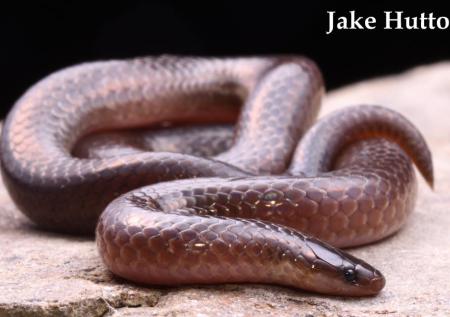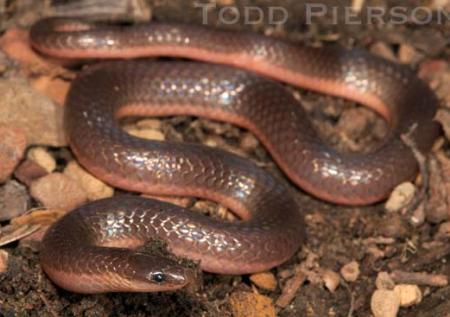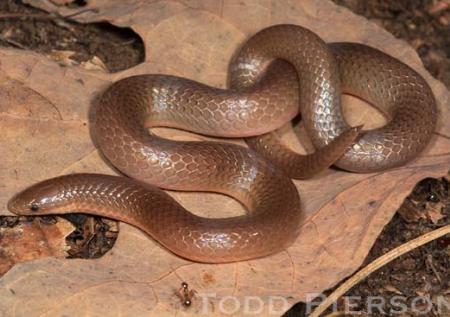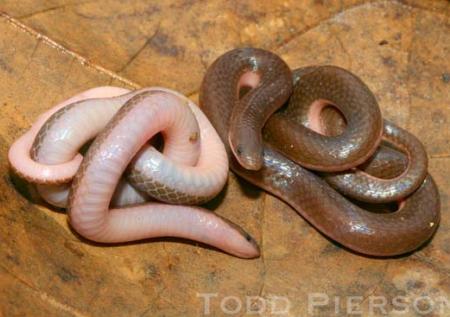Common Wormsnake (Carphophis ameonus)

Click a thumbnail below to view the larger image:







Have you seen a Common Wormsnake?
Click the Report Snake button below to reporting seeing a Common Wormsnake.
Report Snake SightingAppearance
This small and slender snake has a brown to grayish back with a light pink or white belly. The small head is pointed and the end of the tail has a small, harmless spine. The scales are smooth and glossy. In addition, Common Wormsnakes have tiny eyes. Collectively, these characteristics allow Common Wormsnakes to resemble an earthworm. The anal plate is divided.
Size
Adults range from 7 to 11 inches in total length.
Habitat/Range
Common Wormsnakes are found throughout most of the state, although they appear to be absent in some areas of north central Kentucky. They are common in moist, deciduous forests. Wormsnakes live under rocks, inside decaying logs, and under leaf litter.
Natural History
Wormsnakes are fossorial (i.e., live underground) and prefer moist conditions. Worms and soft-bodied insects are consumed. Wormsnakes are eaten by a variety of larger animals including other snakes, birds, and shrews. Females lay up to 12 (usually 4-5) eggs in early summer and babies can be found in late summer or early fall.
Notes/Miscellaneous
Wormsnakes do not try to bite when handled, although they will wriggle and release a pungent musk when disturbed. Additionally, they may attempt to poke with their tail spine into the captor.
